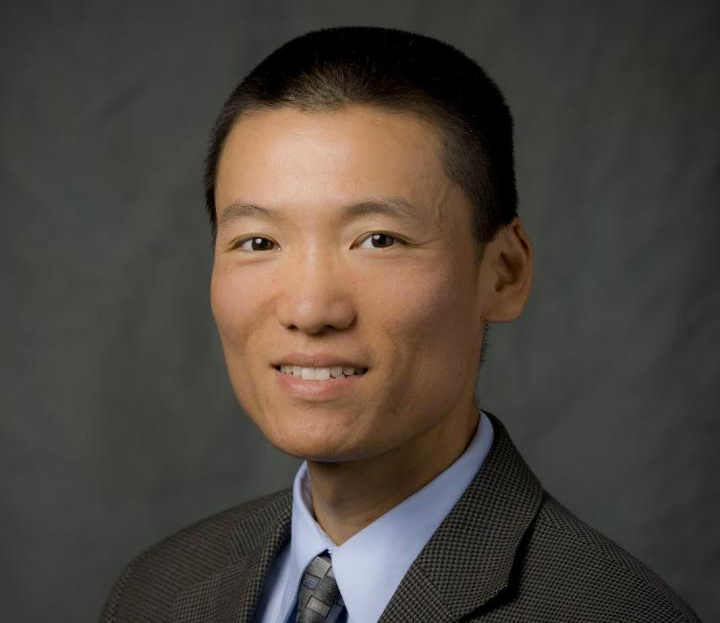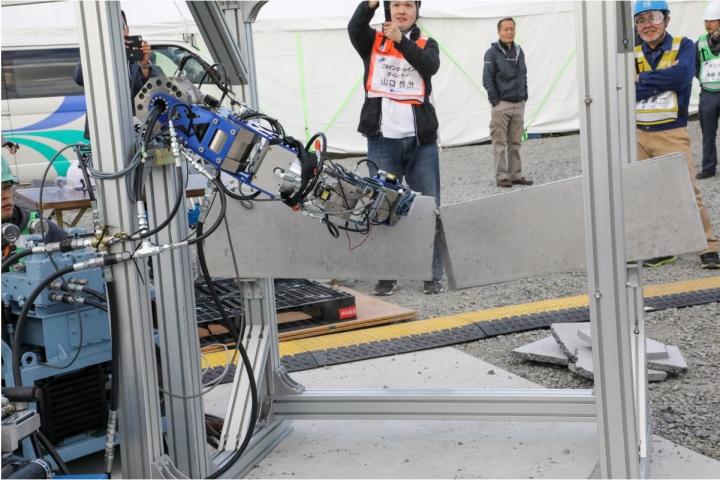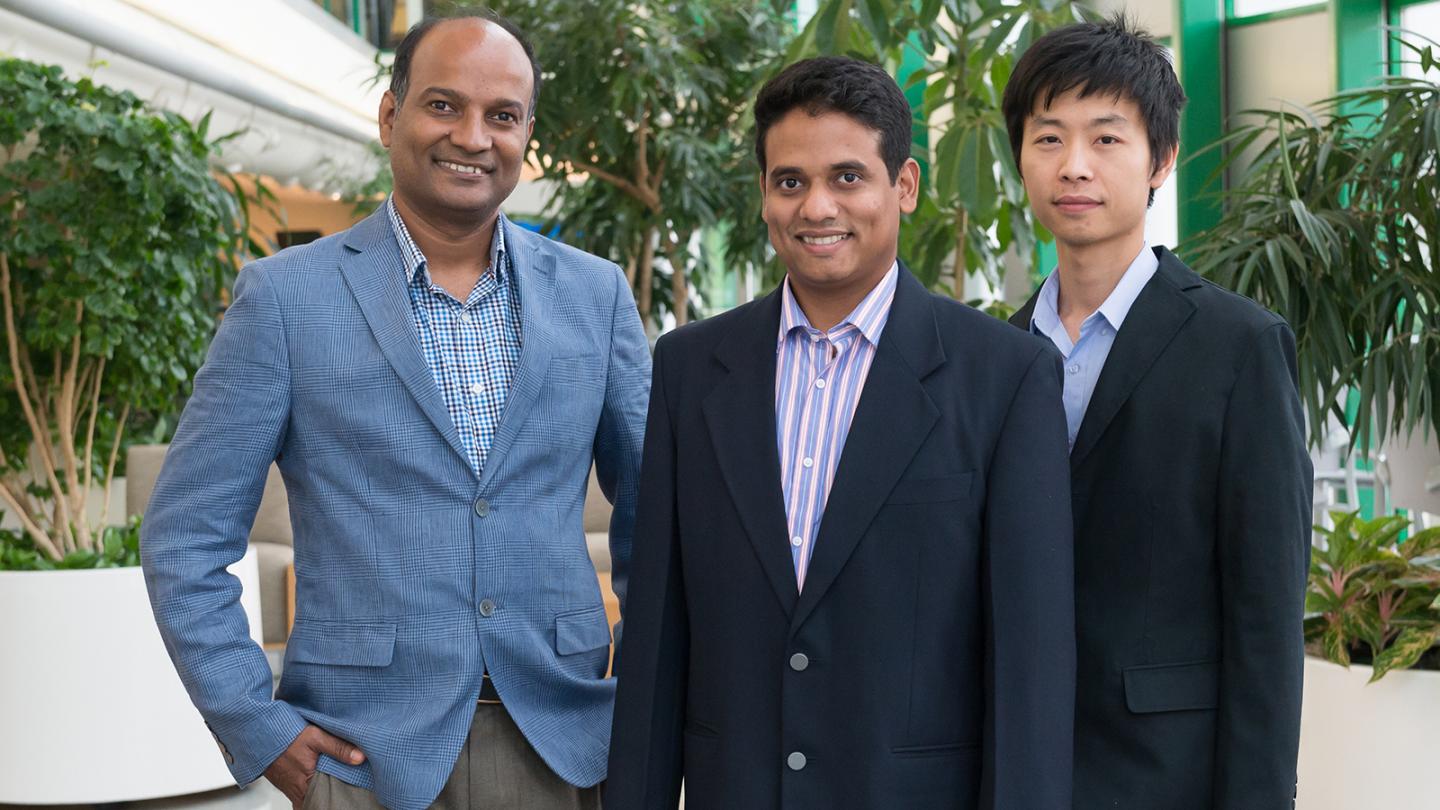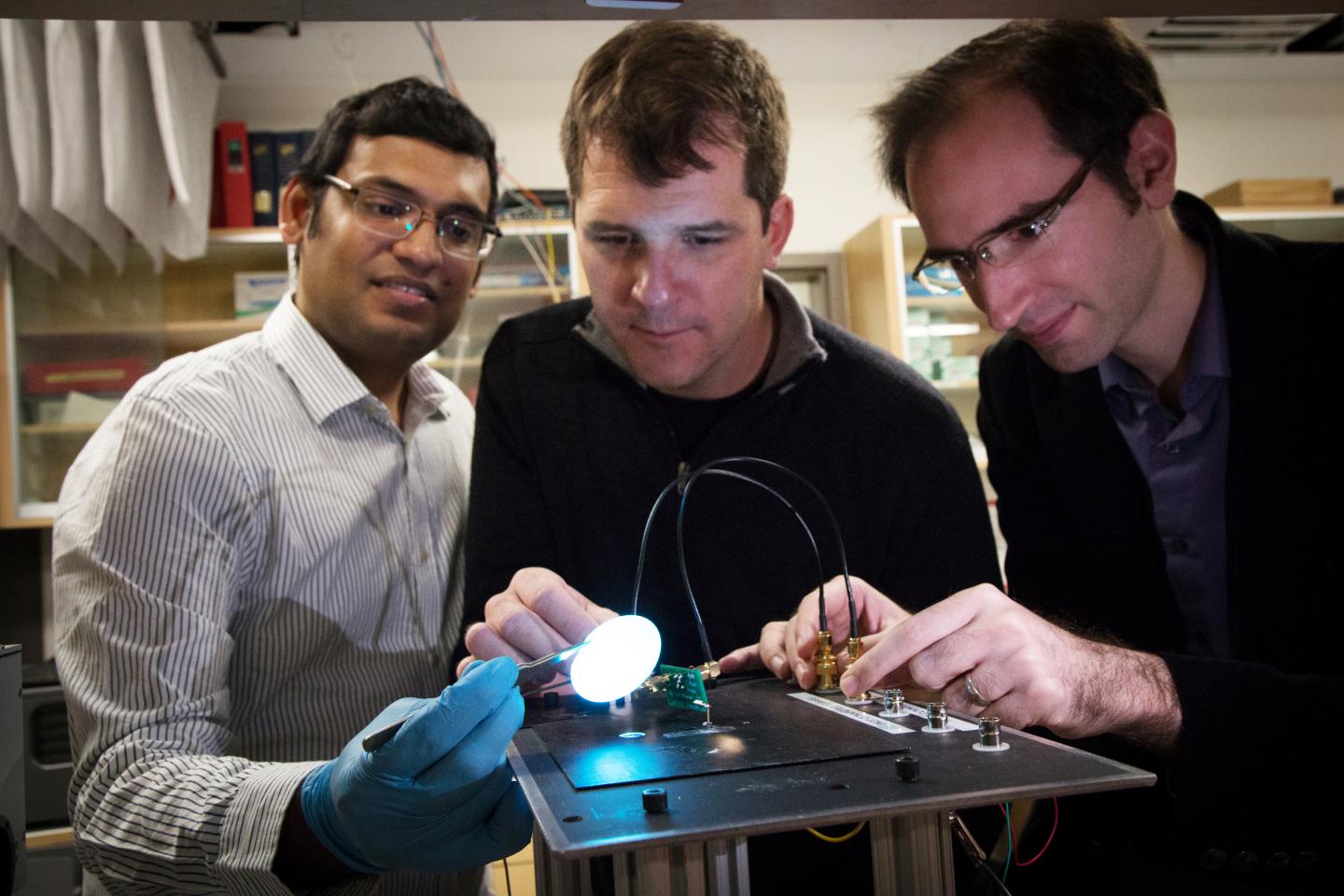
Click image to enlarge
"We're enriching the toolbox of CPS architects and engineers and making it possible for them to rigorously develop networked cyber physical systems with hard-real-time performance guarantees for applications in which every millisecond matters," says Dr. Liang Cheng, an associate professor of computer science and engineering at Lehigh University's P.C Rossin College of Engineering and Applied Science. Cheng, who is a member of the Leadership Council of Lehigh's new Institute for Cyber Physical Infrastructure and Energy (I-CPIE), was recently awarded nearly $500,000 in funding from the National Science Foundation's Cyber-Physical Systems (CPS) program.

This figure shows a seven-axis hydraulic robot arm breaking concrete slabs, each 30 mm thick. This is a prototype for comparison with a four-legged robot also being developed in this project by Waseda University, Meiji University, and others, produced at approximately the same size. It consists of seven of the new hydraulic motors.

Principal investigator Subramanian Sankaranarayanan (left), and co-principal investigators Mathew Cherukara (center), Henry Chan (right) and Badri Narayanan (not pictured) are developing a new machine learning based software that will enable industry to more quickly and efficiently perform the molecular dynamics simulations they need to vet the performance of new materials for their products.

Image captured by an electron microscope of a single nanowire memristor (highlighted in colour to distinguish it from other nanowires in the background image). Blue: silver electrode, orange: nanowire, yellow: platinum electrode. Blue bubbles are dispersed over the nanowire. They are made up of silver ions and form a bridge between the electrodes which increases the resistance.

(Left to right) University of Utah electrical and computer engineering assistant professor Sriram Krishnamoorthy, associate professor Mike Scarpulla, and assistant professor Berardi Sensale-Rodriguez have received a $1.88 million grant to study the properties of gallium oxide as a semiconductor for more efficient power converters. The material could prove to be much more efficient, losing less heat and providing longer power to devices such as drones or all-electric planes, trains and buses.

NUST MISIS scientists together with their colleagues from the Central Metallurgical R&D Institute (Cairo, Egypt) have developed a composite material which will extend the life of solar towers -- installations for collecting Solar thermal energy -- from 2-3 to 5 years. The research article has been published in the Renewable Energy journal.